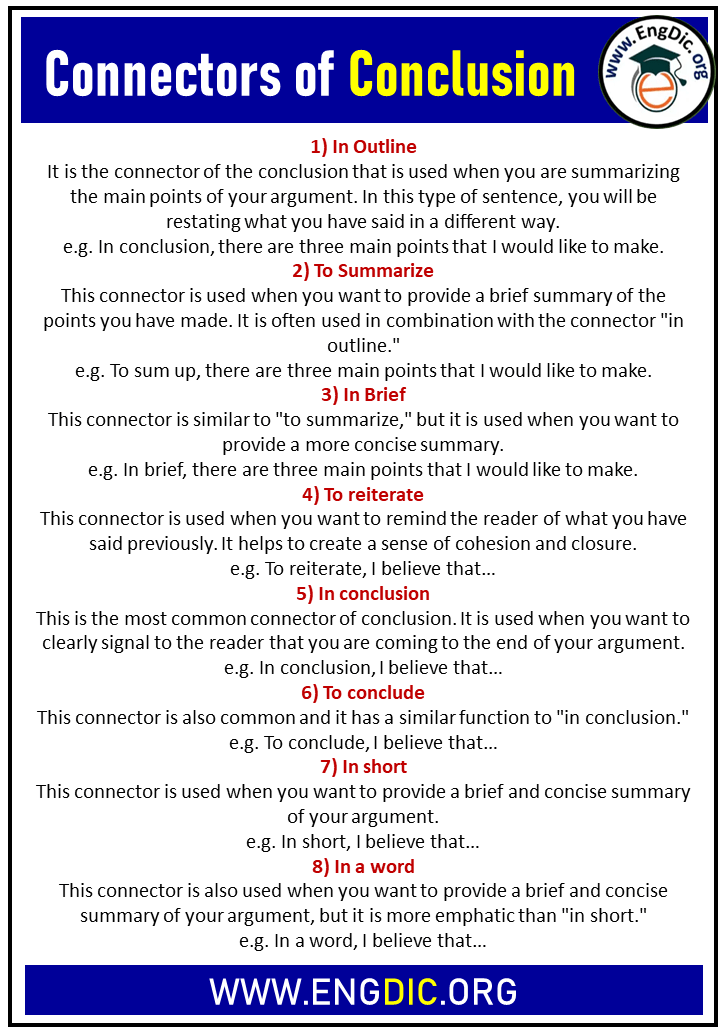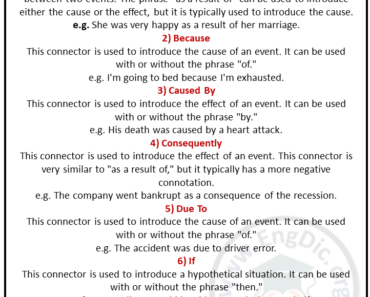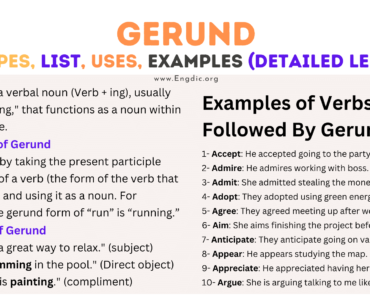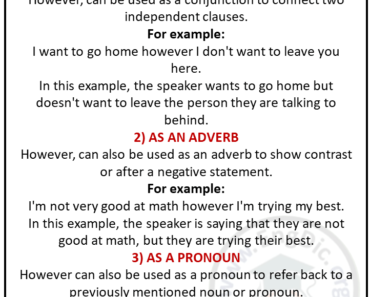Connectors of Conclusion (Definition and Example Sentences)

When it comes to writing, one of the most important things to know is how to end your piece. This is where connectors of conclusion come in. These words and phrases signal to the reader that you are coming to the end of your thought or argument.
By using them, you can create a strong sense of cohesion and closure. In this blog post, we will explore the different types of connectors of conclusion and provide some examples of sentences to show you how they are used. By the end, you will have a better understanding of how these devices work and how to use them in your own writing. So let’s get started!
List of Connectors of Conclusion in Detail
1) In Outline
It is the connector of the conclusion that is used when you are summarizing the main points of your argument. In this type of sentence, you will be restating what you have said in a different way.
e.g. In conclusion, there are three main points that I would like to make.
2) To Summarize
This connector is used when you want to provide a brief summary of the points you have made. It is often used in combination with the connector “in outline.”
e.g. To sum up, there are three main points that I would like to make.
3) In Brief
This connector is similar to “to summarize,” but it is used when you want to provide a more concise summary.
e.g. In brief, there are three main points that I would like to make.
4) To reiterate
This connector is used when you want to remind the reader of what you have said previously. It helps to create a sense of cohesion and closure.
e.g. To reiterate, I believe that…
5) In conclusion
This is the most common connector of conclusion. It is used when you want to clearly signal to the reader that you are coming to the end of your argument.
e.g. In conclusion, I believe that…
6) To conclude
This connector is also common and it has a similar function to “in conclusion.”
e.g. To conclude, I believe that…
7) In short
This connector is used when you want to provide a brief and concise summary of your argument.
e.g. In short, I believe that…
8) In a word
This connector is also used when you want to provide a brief and concise summary of your argument, but it is more emphatic than “in short.”
e.g. In a word, I believe that…
9) To put it simply
This connector is used when you want to explain an idea or concept in a simplified way.
e.g. To put it simply, X is Y.
10) In other words
This connector is used when you want to clarify or expand on something that you have said previously. It allows you to provide more detail and explanation.
e.g. In other words, X is Z.
11) To be more specific
This connector is also used when you want to provide more detail and explanation, but it is specifically focused on giving more information about a particular point or idea.
e.g. To be more specific, X is Y.
12) To illustrate
This connector is used when you want to provide an example to help the reader understand a concept or idea.
e.g. To illustrate, let’s take the example of…






